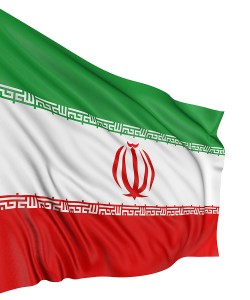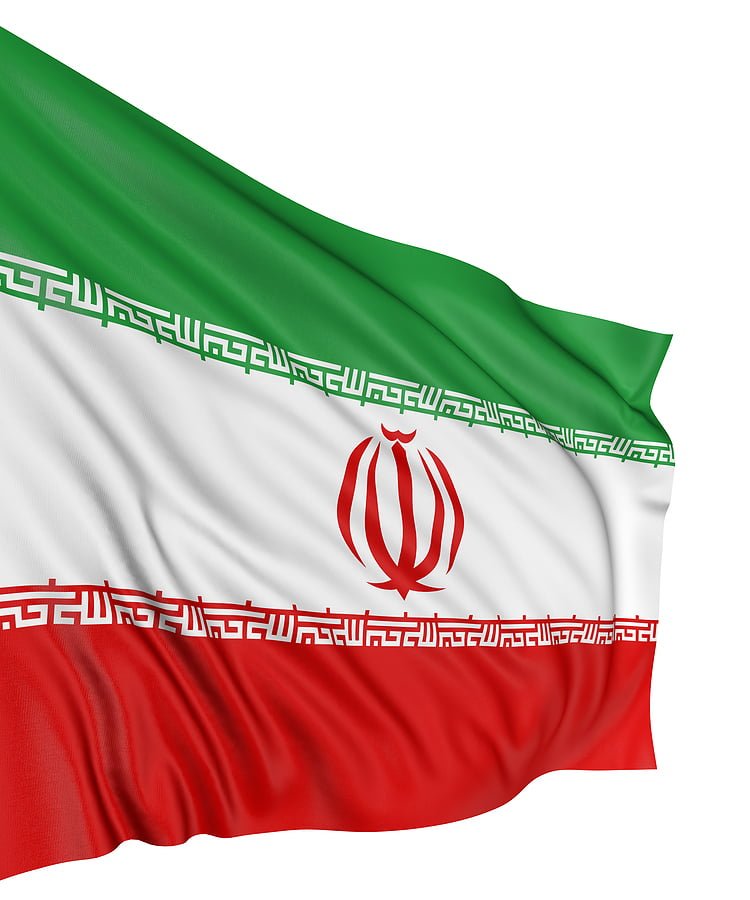2012-07-30 By Richard Weitz
Many consider Iran the ultimate victor of the U.S. invasion of Iraq in 2003.
Although the subsequent military occupation of Iraq that ended in 2011 was carried out by the United States and its allies, Iranian influence in Iraq grew tremendously following the elimination of the Saddam Hussein’s government and the empowerment of Iraq’s majority Shiite population.
Iran’s goals regarding Iraq are to create a security buffer zone by keeping Iraq weak and under Tehran’s predominant influence; strengthen religious and economic ties between Iraq and Iran, limit U.S. influence in the Persian Gulf region, and use Iran’s improved regional standing to induce other Persian Gulf states to pay more heed to Tehran’s concerns.
Iranian actors have employed three core instruments to exert their influence in Iraq:
- Cultivating ties with Iraqi political and religious leaders;
- Providing weapons and other support to pro-Iranian militias in Iraq;
- Strengthening Iran’s economic presence in Iraq through trade, investment, and other policies designed to make Iraq economically dependent on Iran.
Yet, Iran’s influence in Iraq remains constrained by the efforts of other foreign powers (especially the United States and Turkey), by Iraqi politicians and militias opposed to Iran and its Iraqi allies, the autonomy exercised by Iraq’s Kurdish and Sunni regions from the Iranian-leaning government in Baghdad, and, above all, Iraqi nationalism, which resists the efforts of any foreign country, including Iran, to dominate Iraq.
The removal of Hussein and his Baathist Party created a power vacuum that Iran, through its close ties to Iraq’s Shiite politicians and Shiite militias, readily exploited. In the aftermath of the March 2003 invasion of Iraq, the borders between Iraq and Iran became much more porous. Iranian nationals, many of whom were native Iraqis or speakers of Iraqi Arabic, enjoyed largely unimpeded entry into Iraq.

Iranian influence grew in Iraq’s Shiite shrine cities, such as Karbala and Najaf, as well as in Baghdad, Basra, and other regions.
When the coalition transferred authority to Iraqi leaders in subsequent years, the new Shiite-dominated governments resumed diplomatic relations with the Islamic Republic of Iran. Prime Minister Ibrahim Jaafari and his successor, Nuri al-Maliki, also strengthened economic, religious, social, political, and security ties with Iran.
The Dawa, the Islamic Supreme Council of Iraq, and Iraq’s other Shiite political parties have extensive ties, with some relationships dating back decades when they lived in exile in Iran due to Saddam’s oppression of Shiite nationalism.
Between 2003 and 2005, several pro-Iranian, mostly Shiite political groups did well in Iraqi elections. Iranians intervened to promote the United Iraqi Alliance, which encompassed nearly all Iraqi Shiite factions and helped limit the votes cast for secular or Sunni politicians. In the December 2005 parliamentary elections, the Alliance won 128 of 275 seats. Al-Maliki, the senior leader of Dawa, became Prime Minister. Iranian support to friendly Iraqi political parties has continued in subsequent years and persists today.
Of all the major Shiite parties, the Islamic Supreme Council of Iraq (ISCI), formerly known as the Supreme Council for Islamic Revolution in Iraq (SCIRI), possesses the strongest ties to Iran. During Saddam’s tyranny, ISCI leaders spent decades living in exile in Iran. They organized an underground militia, known as the “Badr Brigades,” in Iraq. Iran’s Revolutionary Guard Corps (IRGC) helped recruit, arm, and train this group. Iran’s support for the ISCI proved very productive, at least for a while. The ISCI-backed Badr Brigades endured beyond Saddam’s demise. This 15,000 member militia has since been integrated into the ISF, particularly the National Police Force.
While Iran no longer funds a militant arm of the ISCI, Iranians still maintain close political ties with the party. ISCI leader Ayatollah Mohammad Baqr Al Hakim was killed in a 2003 car bomb attack in Najaf, but his legacy of close ties with Iran endures under the leadership of his nephew, Ammar al-Hakim.
In the 2005 elections, the ISCI formed a considerable part of the bloc that dominated Iraq’s parliament during its first term. Iran successfully orchestrated this Shiite-dominated coalition by uniting the ISCI, the Dawa Party, and the faction led by fundamentalist Islamic cleric Moqtada Al-Sadr.
Over time splits within and between these groups weakened the bloc, but they still cooperate on many issues. In addition, Iran has backed the controversial Shiite-led de-Baathification program, a set of policies targeted primarily against Sunnis who had been senior supporters of Saddam regime.
Iranians have favored democratic elections in Iraq, indirectly supporting U.S. aims, because they expected pro-Iranian politicians would come to power.
But the Iranian government has prudently not relied solely on favorable electoral outcomes to advance its agenda in Iraq. Iranians have also sought and found other tools of influence that have more directly threatened U.S. objectives in Iraq.
Iranian representatives have also been cultivating ties with, and seeking to bring under Tehran’s control, Iraq’s influential Shiite religious establishment. Iraq has become a major destination for Iranian religious tourists. Tens of thousands of Iranians visit Iraq’s holy cities every month, with an estimated three to four million making the pilgrimage during the annual Ashura commemorations.
Najaf is a traditional center of the Shiite world and emerging as an important Iraqi political center. The city has become the focus of Iranian investment that disproportionately benefits Tehran’s local allies. In recent years, Iranian clerics trained in the official ideology of clerical rule have rivaled Iraqi clerics schooled in the quietist tradition, which encourages a more limited clerical role in politics, and is traditionally taught at the religious seminaries of Najaf.
In a blow to Iranian ideology, Saddam’s overthrow has augmented the influence of Grand Ayatollah Ali al-Sistani, the leading Ayatollah in Najaf and a strong representative for the quietist branch of Shiite Islam. Although Sistani’s standing in Iran (his homeland) has been a source of concern for Iranian radicals, Tehran does have significant leverage over his actions. If Tehran should close his offices in Iranian territory, Sistani would be denied a major source of income and influence.
As a result, he has been careful not to criticize the clerical leadership of Iran or to challenge its policies directly. Although al-Sistani has pushed for direct elections and other democratic practices in Iraq, his few forays into Iraqi politics—such as his endorsement of the United Iraqi Alliance in 2005—have sometimes indirectly served Tehran’s interests.
Iran has also begun to consider how to secure a friendly successor to the 81-year-old Sistani.
Iran is currently maneuvering to secure Ayatollah Mahmoud Hashemi Shahroudi as al-Sistani’s replacement. Although he was born in Iraq, Shahroudi has risen to hold senior positions in Iran’s government, including heading its judiciary. Shahroudi has tremendous wealth that he can use to advance his candidacy. Having studied under Grand Ayatollah Ruhollah Khomeini and having taught Hassan Nasrallah, the leader of Hezbollah, Shahroudi represents a much more conservative and pro-Iran view than al-Sistani. Shahroudi’s decision to move to Najaf in late 2011 angered many residents of the city, who viewed his presence as a manifestation of further Iranian encroachment on Iraqi sovereignty.
Moqtada al-Sadr, a Najaf-based political and religious leader, has become one of these tools, though al-Sadr and his followers are Arab nationalists rather than Iranian partisans. Al-Sadr initially lacked major ties to Iran due to his family’s decision to remain in Iraq under Saddam. Still, Moqtada’s cousin, Mohammed Baqr Al-Sadr, founded the Dawa Party in the late 1950s and was politically close to Iranian religious leader Ayatollah Khomeini during his exile in Najaf.
While representing different interests, al-Sadr and Iran began to gravitate toward one another with the common goal of challenging the West’s military occupation. To that end, Iran made the calculated decision to invest in the Jaysh al-Mahdi, or “Mahdi Army” created by al-Sadr after Saddam’s fall.
They helped arm, train, and fund its units, which at times fought against U.S. forces and Iraqi Sunnis. During the height of the sectarian war in Iraq following the February 2006 bombing of the Al-Askari Mosque in Samarra, the Mahdi and Badr militias provided security for Shiite neighborhoods in Baghdad, especially in Sadr City, as well as parts of southern Iraq.
Iranians also provided financial, material, and logistical support to the Shiite militia in Iraq.
Starting in 2005, reports circulated that U.S. soldiers were intercepting large shipments of explosives used to make improvised explosive devices (IEDs) as they were smuggled into northeastern Iraq from Iran. Some U.S. intelligence officials believe the Iraqi government supported this effort even if the actual smuggling was conducted by the Iranian Revolutionary Guard or Hezbollah.
U.S. intelligence subsequently concluded that at least three Shiite militia groups — the Promised Day Brigade, Ahl al-Haq and Kataib Hezbollah —received extensive training and weapons supplies from the Iranian Revolutionary Guard a-Quds Force. The al-Quds Brigades are a division of the IRGC responsible for operations outside Iran.
The U.S. State Department Country Report on Terrorism in 2009 for Iraq maintains that the Qods Force trained militia to construct and use sophisticated IED technology and other advanced weaponry.
According to U.S. estimates, the approximately 150 Quds personnel spread throughout Iraq’s various provinces provided the militias with armor-piercing “Explosively-Formed Projectiles” (EFPs), 122-millimeter mortars, improvised rocket assisted munitions, and 107-millimeter rockets. Quds members have engaged in a variety of roles in Iraq, including legitimate trade and investment projects, in order to influence Iraq’s political, economic, and military developments.
Despite its arms shipments and other support, Iran’s influence within the Mahdi Army never rivaled that of Al-Sadr himself.
His decision to reside in Iran for religious studies from 2006-2009 saw a precipitous decline in the force’s influence. In 2008, Prime Minister al-Maliki ordered the ISF, in an operation dubbed “Charge of the Knights,” to suppress al-Sadr’s militia.
So powerful had the Mahdi Army’s influence become that coalition forces arrested 1,200 police officers, out of a force of 15,000, for supporting the militia. About six months after this loss, al-Sadr ordered his militia to disarm and suspend all military activities.


